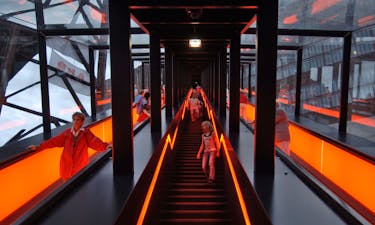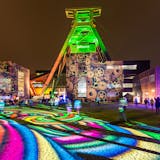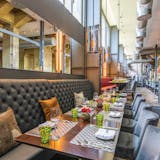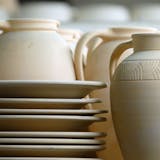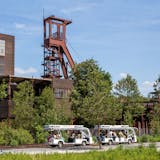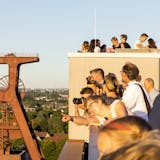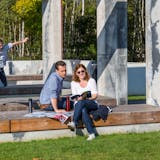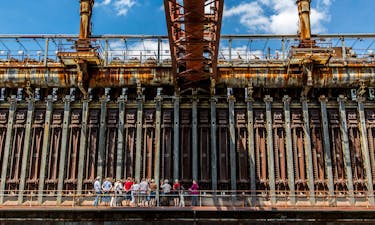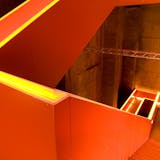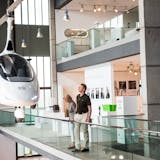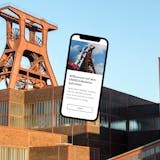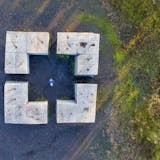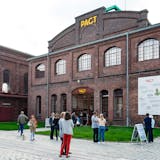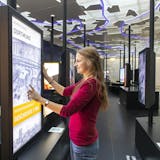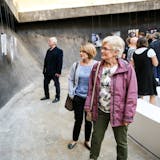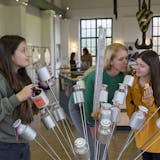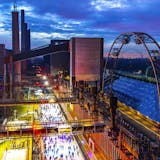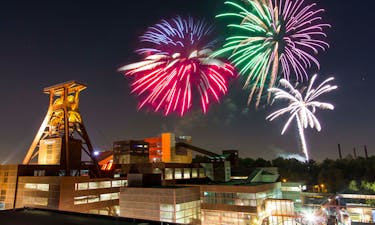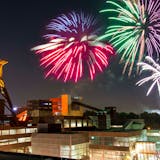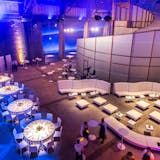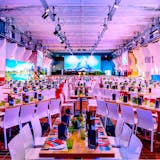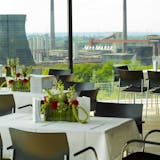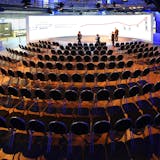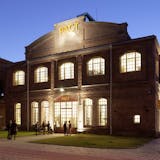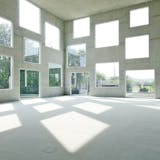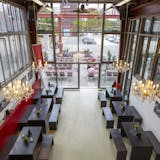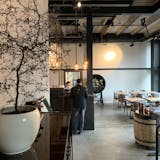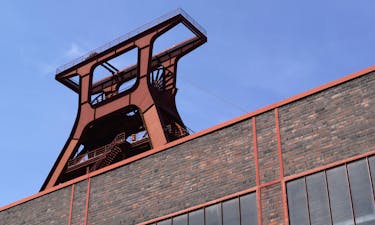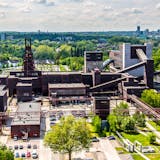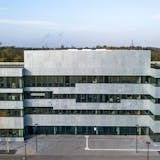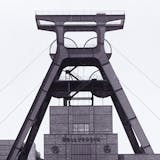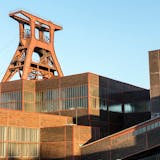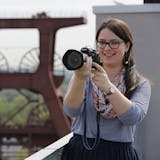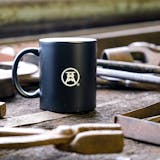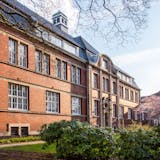
Keramische Werkstatt Margaretenhöhe
Margaretenhöhe Ceramic Workshop
Keramische Werkstatt Margaretenhöhe
Beschaulichkeit als Gegenmittel zum Industrierevier stand am Anfang der „Gartenstadt Margarethenhöhe“, mehr als zehn Kilometer im Südwesten der Stadt Essen gelegen. Nach Vorstellungen von Margarethe Krupp konnten dort „Kruppianer“ sukzessive seit 1910 in einem grünen, fast dörflichen Wohnumfeld Erholung nach der alltäglichen Schwerarbeit finden. Mit der Gründung einer Künstlersiedlung kamen Ateliers und Manufakturen hinzu. Die „Keramische Werkstatt“, die sich von Beginn an wie Zollverein Schacht XII an der schlichten Formensprache des Bauhauses orientierte, konnte allerdings nicht auf qualmende Brennöfen verzichten. Obwohl dort zunächst Keramik für die neu errichteten Gebäude auf der Margarethenhöhe entstanden, wurde ein zur Zeche Zollverein gehörendes Gebäude auf der Schachtanlage 6/9 im Norden der Stadt, in Stoppenberg bezogen. 1986, im Jahr der Zechenschließung, zog die Manufaktur auf die Gründeranlage von Zollverein ins ehemalige Baulager der Zeche. Eine treffliche Verbindung. Seit damals ist Young-Jae Lee die Leiterin der Werkstätten. Die preisgekrönte Töpferin schafft dort sowohl erlesene Meisterstücke, die in berühmten Museen in Berlin, Philadelphia, Boston oder Jerusalem einen Platz gefunden haben. Aber zugleich geht sie vom Gebrauch aus, den klassischen Mitteln der Töpferei. Längst ist die Südkoreanerin Leiterin der Keramischen Werkstatt, die so eng verwoben ist mit dem Geist von Zollverein, der Geschichte der Industrie und dem Willen zu herausragender Gestaltung – ob von Vasen oder Schalen in den „Editionen“ oder zeitlos elegantem Essgeschirr.
Margaretenhöhe Ceramic Workshop
Tranquility as an antidote to the industrial district was the starting point for the Garden City of Margarethenhöhe, located more than ten kilometers southwest of the city of Essen. According to Margarethe Krupp’s ideas, Krupp workers and employees were finally able to find relaxation after their daily hard work in a green, almost village-like living environment from 1910 onwards. With the founding of the artists’ settlement, studios and factories were added. However, the “Ceramic Workshop”, which, like Zollverein Shaft XII, was based on the simple design language of Bauhaus from the very beginning, but could not do without smoking kilns. Although ceramics were initially created there for the newly constructed buildings on the Margarethenhöhe, the company moved into the building belonging to Zollverein Coal Mine Industrial Complex at Shaft 6/9 in the north of the city in Stoppenberg. In 1986, the year the complex was closed, the manufactory moved to Zollverein’s founding site in the complex’s former construction warehouse – an excellent connection. Since then, Young-Jae Lee is the head of the workshops. The award-winning potter creates exquisite masterpieces there that have found a place in famous museums in Berlin, Philadelphia, Boston, and Jerusalem. At the same time, however, she takes her starting point from use – the classic means of pottery. The South Korean has long been the head of the ceramic workshop, which is so closely interwoven with the spirit of Zollverein, the history of the industry, and the desire for outstanding design – whether from vases or bowls in the Editions or timelessly elegant tableware.



